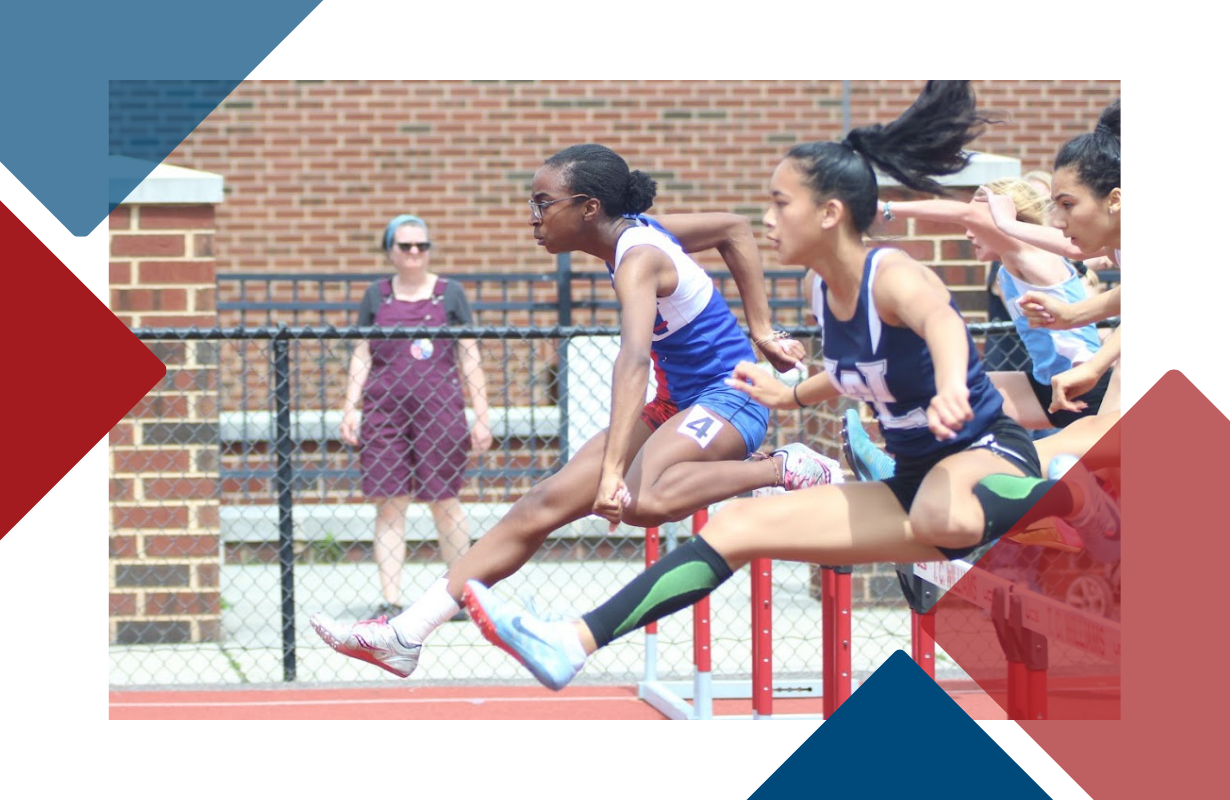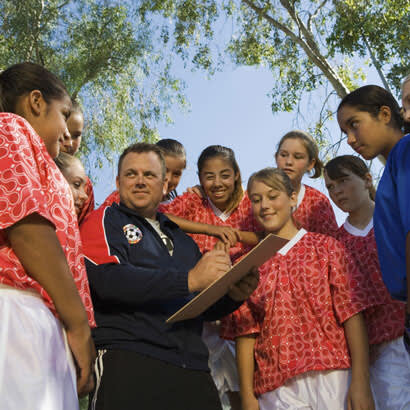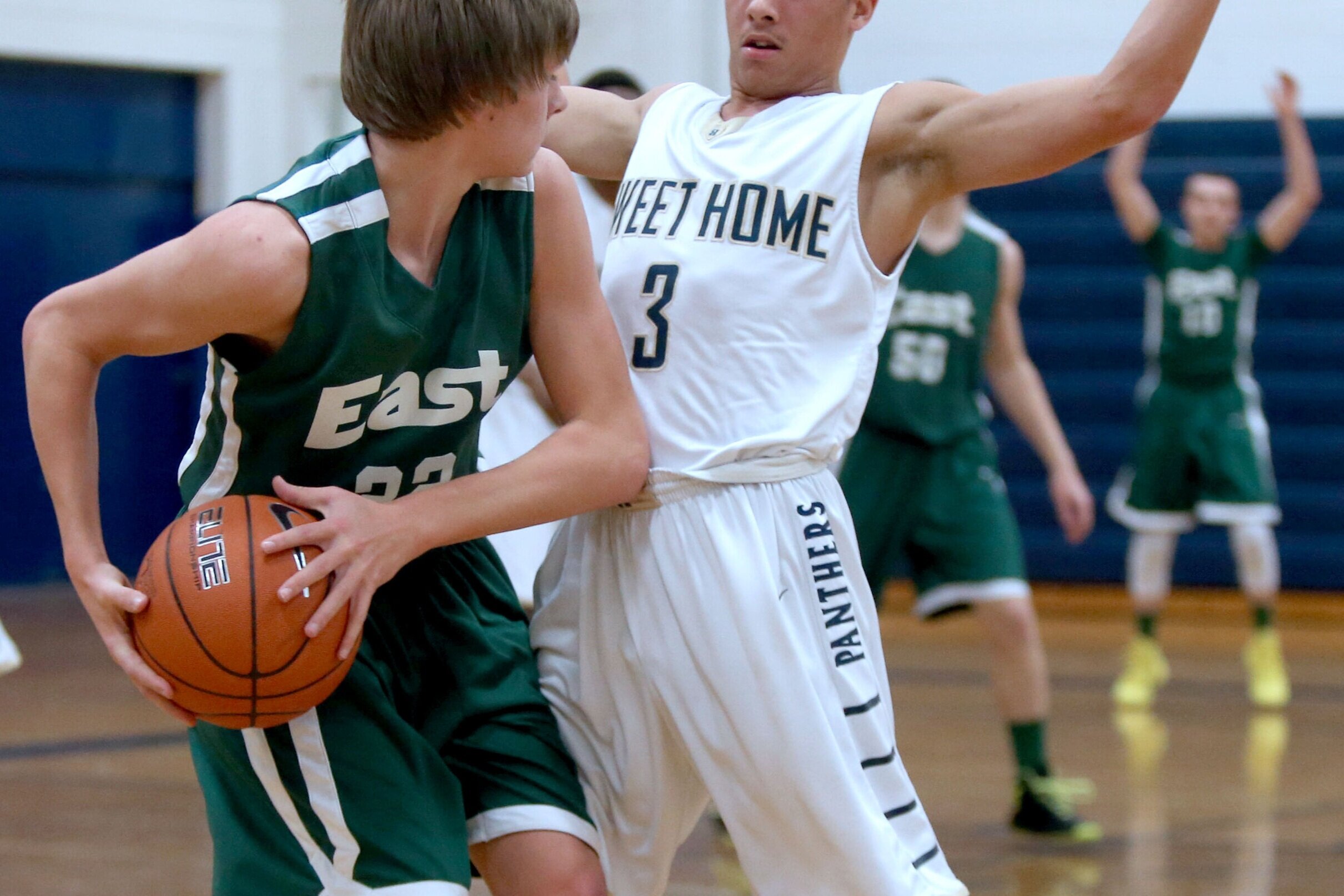The U.S. Soccer Federation released return-to-play guidelines for youth soccer from COVID-19, recommending a phased approach with individual and small-group trainings to start and no travel tournaments in different regions even once games can resume.
The guidelines are the most detailed recommendations produced by a national organization for soccer, which is one of the most popular sports for youth in the U.S., with 2.2 million kids ages 6-12 playing the sport in 2018. U.S. Soccer, the national governing body for the sport, says its guidelines are intended for consideration by national and state soccer associations, clubs, players, coaches, referees and parents, while always deferring to local and state public health authorities on specific modifications. (Read the U.S. Soccer guidelines here.)
“The guidelines take a conservative approach,” said Dr. George Chiampas, U.S. Soccer chief medical officer and an emergency medicine doctor at Northwestern University. “We can’t get this wrong. There’s no room for mistakes. We want, as a sport, to have a tone of responsibility and we want the phases to move forward. If we go back because of things outside of our sport or what the club does, that’s out of our hands. But as clubs and as a sport, we want to do everything we can so kids can be active and interact and have social components in their life.”
Chiampas said U.S. Soccer created the recommendations based off various sources, including the federation’s safety education platforms, guidelines from the Centers for Disease Control and Education and World Health Organization, recommendations by the U.S. Olympic and Paralympic Committee, and the Aspen Institute’s Project Play resources. Among U.S. Soccer’s recommendations: No multiday youth soccer tournaments that require overnight stays in different regions.
Overnight tournaments can involve youth sharing rooms and using shared transportation for extended periods of time, making them “a larger risk and a significant risk than single-day matches where you can go play a match and come home and be in your home environment,” Chiampas said.
Soccer parents appear to be more cautious on what return to play looks like. A recent survey by North Carolina State University, in partnership with the Aspen Institute, found that only 50% of soccer parents say they feel comfortable with their child returning to travel sports outside of their city or county when restrictions are lifted. That’s a lower comfort level than parents in basketball (59%) and baseball (57%).
Travel soccer tournaments are very popular in the sport and a revenue generator for organizers and local communities. For instance, the US Youth Soccer tournament database currently lists 22 tournaments for the month of June, located in Texas, Indiana, Maryland, Colorado, New York, Virginia, New Jersey and Utah.
“We understand the economics of sport, but it starts with the health and safety,” Chiampas said. “If for the next eight to 12 months this is what we have to do – travel for a day and come back, with no multiday tournaments so kids and parents don’t die – I think it’s incumbent upon all of us to follow this.”
US Youth Soccer CEO Skip Gilbert, whose organization released guidelines in mid-May, said the U.S. Soccer recommendations are a “thoughtful, logical projection of return to play.” However, US Youth Soccer is not taking the same position that clubs should restrict from traveling to overnight tournaments, citing different rates of COVID-19 cases in different communities.
“From a logical progression, it makes all the sense in the world (to restrict travel) if safety is the absolute priority,” Gilbert said. “I think from a guideline perspective, every club is going to make up their mind on what’s in the best interest of their kids. … If I’m in Connecticut and want to travel to a tournament in Massachusetts, fine, let’s go. You can’t really say no to that. At some point, this country has to start getting back to normal, unless there’s a medical reason why we can’t. Every organization is going to have a different spin on it. We have 55 different state soccer associations and 55 different levels of return to play.”
For now, focus on individual and small-group training
U.S. Soccer’s current emphasis is on individual and small-group training – so much so that the association is only releasing Phase 1 guidelines at the moment in order to ensure clarity between phases. Additional recommendations will be released later in June. Teams are advised to only move to a new phase based on state and local guidelines on the number of individuals allowed to gather together.
Chiampas said most states should be in Phase 1 now – after the Phase 0 shelter in place with no team activities – and a couple states are a few weeks into Phase 2 with full team trainings. The phased approach is critical because children are at different stages with strength and endurance and need a pathway for increased loads to reduce injuries, Chiampas said.
“They also need time to make sure their habits are in place – diligent handwashing, wearing masks except during activity, pathways to arrive to training, making sure individuals are symptomatic,” he said. “All of those factors need time and young kids need to follow the tone set by parents and coaches.”
In Phase 1, the focus is on small group trainings with a maximum of nine players and one coach (or less depending on local social distancing guidelines), meaning practices should be split up. U.S. Soccer recommends four to six weeks of this stage in which good social distancing habits are developed to be compliant with COVID-19 protocol and an injury risk-prevention strategy is implemented.
Phase 2, with a recommended duration of three to six weeks, involves full team training while continuing to maintain social distancing. U.S. Soccer says this phase should include a continued acclimatization process strategy to reduce possible injury risk, and the phase should last at least three weeks in order to isolate and/or track any possible symptoms in individuals.
By Phase 3, full team competitions and tournaments can take place, as long as they are local and following mitigation strategies. New research suggests that the risk of “close encounters” during a soccer match is minimal, though the study tracked only professional players, not youth. Future recommendations released by U.S. Soccer may include guidance on throw-ins and the amount of time spent not practicing social distancing when corner kicks and free kicks occur, Chiampas said.
“U.S. Soccer was the first one five to six years ago to remove heading in the youth game, and we received a tremendous amount of criticism across the game globally. Now see you the same restrictions in Europe,” Chiampas said. “Does it mean we don’t have a wall or don’t have corner kicks? I don’t think we’re looking to do that and change the game. But can we make the referee aware? Can we speed the game up? Those are the things you can at least bring awareness to in order to limit some of the interactions.”
For now, U.S. Soccer’s most specific guidelines are for Phase 1 with individual and small-group trainings. U.S. Soccer recommends no more than two small groups on a regulation-size field at any time. They should be organized on opposite sides of the field.
These groups should not train together or share equipment, including balls, and all players and coaches should maintain social distancing guidelines before, during and after practice. The same groupings of coaches and players should be maintained through Phase 1 to limit unwarranted exposure.
U.S. Soccer says each group should be provided with a specific and different training time (such as Group A trains at 6 pm and Group B trains at 7 pm). Different areas should be assigned to enter and exit the field to prevent crossover. An “entrance time” should be designated for each coach and player, and other participants should wait in their cars until their specific time to enter the field.
All participants – coaches, players, referees, instructors, administrators – are recommended to wear new or clean masks upon arrival and departure at trainings and when not physically active. It’s recommended that masks not be worn during physical exertion.
“Our youth players are also seeing this in the professional game, and that’s important as well,” Chiampas said. “When they see pros like Megan Rapinoe or Christian Pulisic wearing masks when not playing, they’re more likely to follow it.”
It’s recommended that coaches plan ahead to prepare the field to best accommodate social distancing. One idea from U.S. Soccer: Create personal prep stations, with a line of cones 6 feet apart in an area to the side of the training field. Arrange one cone per participant (including player, coach, administrator, referee) and designate that spot as their place for the duration of the training session for bags, water bottles, towels and other items.
Trainings in Phase 1 should be longer than 60 minutes since players may not be physically prepared to return. Coaches are advised to plan to progress to full intensity training over two to four weeks.
Players are advised during Phase 1 to travel to trainings with as few people as possible. Carpooling or ride sharing is highly discouraged. If this does occur, it’s recommended to ride with the same individuals each training and while wearing masks in the vehicle.
Self-quarantine and contact tracing guidelines
U.S. Soccer recommends that if a coach or player has been within six feet of someone suspected of COVID-19, that person in close contact should self-quarantine for 14 days. Parents should communicate with the club or coach if there is suspected exposure.
The guidelines recommend that participants should conduct at home a daily temperature check for a low- grade fever (less than 100.4 degrees) prior to each training. For individuals with a pre-existing medical condition or who have tested positive for COVID-19, U.S. Soccer recommends written clearance from a physician for return to full participation.
For contact tracing purposes, the guidelines say to maintain a list of all facility users and participants and attendees at training. For privacy purposes, the list should be securely stored and not shared publicly. If a participant becomes ill, this information can be used to determine who may have been directly exposed to COVID-19 and to advise accordingly. Information to collect on the contact tracing list includes:
Date
Venue
Name (for minors, use a parent’s contact information)
Phone number
Email address
Specific training session (i.e., time/field/coach)
Chiampas worries the most about keeping social distancing within the team camaraderie in youth soccer, such as no close-contact celebrations after goals.
“Kids and sport bring people together,” he said. “I think that feeling of not being able to hug your teammate or shake his hand is going to be our biggest challenge. How do we embrace the game we love but not be able to embrace it the way we’re used to? I think that’s what pains us all as a society. … I challenge everybody in soccer to think about that and how to fill that void.”
Ultimately, these are all recommendations by U.S. Soccer without an enforcement mechanism to make affiliates adopt them. However, Chiampas views COVID-19 guidelines as the new heading restrictions. When U.S. Soccer banned head balls for kids 10 and under in 2015, surveys showed that more than 90% of organizations nationally followed the guideline, he said.
“At the beginning, there’s going to be non-compliance (of COVID-19 guidelines) or young kids that just forget their mask or don’t come the way they’re asked,” Chiampas said. “That’s OK, but we should stop and educate. If we do that, I think parents are going to appreciate it and move forward with us.”
Do you have a topic that you would like Project Play to explore in future COVID-19 youth sports coverage? Email Jon Solomon at jon.solomon@aspeninstitute.org.





















